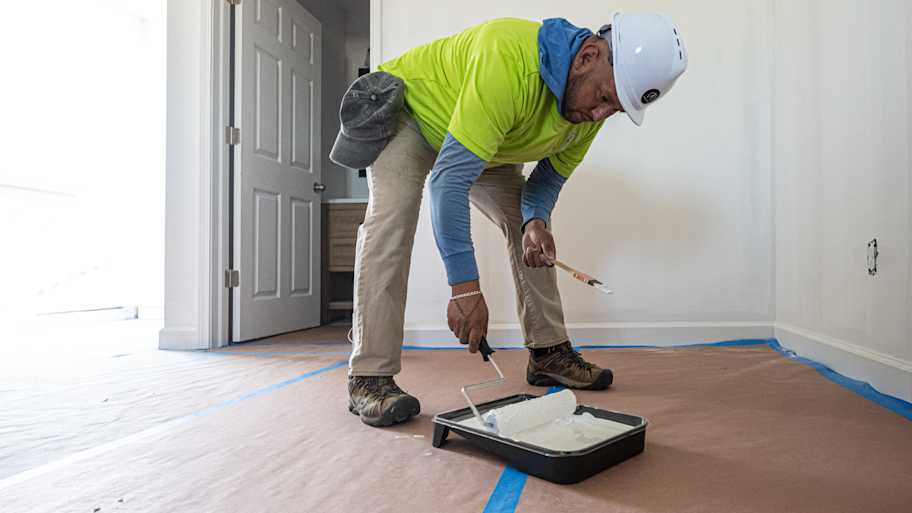The Best Paint for Interior Doors
It all hinges on the sheen
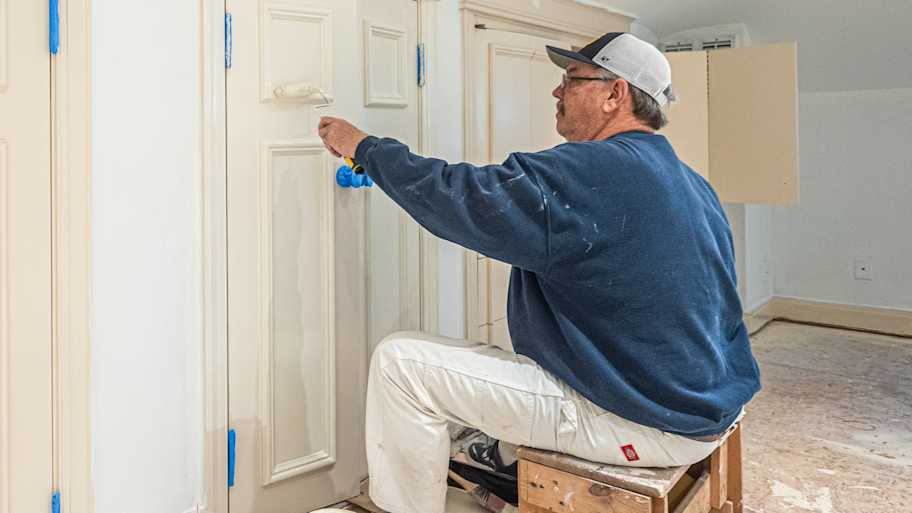

The best paint for interior doors will often be a latex paint with a semi-gloss finish. However, there are four main types of paint homeowners use for interior doors: semi-gloss latex paint, high-gloss latex paint, semi-gloss acrylic paint, and high-gloss acrylic paint. The one you choose will affect your up-front costs, the paint’s durability, and how easy it is to keep your door clean.
1. Semi-Gloss Latex Paint
Latex paint retains some of its flexibility even after it dries, making it the ideal option for interior doors that see exposure to moisture, like those leading into bathrooms, laundry rooms, mudrooms, or pantries in the kitchen. Steam and humidity will cause wooden doors to expand, and latex paint will easily stretch in response rather than cracking, as oil-based paint and some acrylic paints might.
A semi-gloss finish on your latex paint will make your door stand out from your walls—where an eggshell or satin finish is likely best—and improve your door’s resistance to moisture. Most importantly, a semi-gloss finish is easy to clean, which is important for a door that will see a lot of interaction from people in your home. Most local interior painting companies will default to semi-gloss latex paint for interior doors.
Oil-based paints contain higher volatile organic compounds (VOCs) than latex paints. To limit your exposure to VOCs while painting indoors, keep the area well-ventilated, wear respiratory protection, and avoid the painted area for at least 72 hours once finished.
| Pros | Cons |
|---|---|
| Easy to clean | Expensive |
| Durable | Shows imperfections |
Best for: Doors in areas that see exposure to high traffic and moisture, like kitchens and bathrooms
2. High-Gloss Latex Paint
A high-gloss latex paint will also flex with changes in moisture and humidity, so this paint is suitable for all your interior door painting ideas, including bathrooms, kitchens, laundry rooms, and more. You can also opt for this type and finish for standard closet doors, too.
The high-gloss will make your door pop a bit more than a semi-gloss finish, maximizing the durability and making your door even easier to wipe clean. Some homeowners don’t like the sheen on high-gloss paint, so get a sample and look at it in your space before choosing this finish.
| Pros | Cons |
|---|---|
| Maximum durability | High sheen |
| Easiest to clean | Expensive |
Best for: Doors in high-traffic areas with exposure to moisture, where homeowners prefer a bit more shine on their surfaces
3. Semi-Gloss Acrylic Paint
Acrylic paint is more durable than latex paint, so if you’re refreshing an interior door that sees excessive use and abuse, like doors leading to and from mudrooms, this might be the better option. Acrylic paint also has better resistance to UV light, so if your interior space sees a lot of natural sunlight, acrylic paint will likely hold its color for longer.
Most homeowners prefer a semi-gloss finish on doors and find high-gloss to have too much sheen. Semi-gloss will still be easier to clean than matte, eggshell, and satin finishes, so it’s a great option for balance between ease of maintenance and moderate sheen for your interior doors.
| Pros | Cons |
|---|---|
| Easy to clean | Expensive |
| UV resistant | Less flexible |
| High durability |
Best for: Interior doors that see exposure to sunlight and those that see excessive wear and tear but minimal exposure to moisture
4. High-Gloss Acrylic Paint
A high-gloss acrylic paint will have maximum durability, so it’s likely the best option for doors leading into garages or utility closets. Acrylic paint isn’t going to flex as much as latex paint, so it’s not ideal for areas that see a lot of moisture, but it will stand up to dings and scratches much better.
The high-gloss finish will also make wiping your door clean a breeze. It might be too much of a sheen for some homeowners, so make sure to paint just a small area at first to see if you like this finish.
| Pros | Cons |
|---|---|
| UV resistant | Less flexible |
| Easy to maintain | Most expensive |
| Maximum durability | High shine |
Choosing the Right Paint for Interior Doors
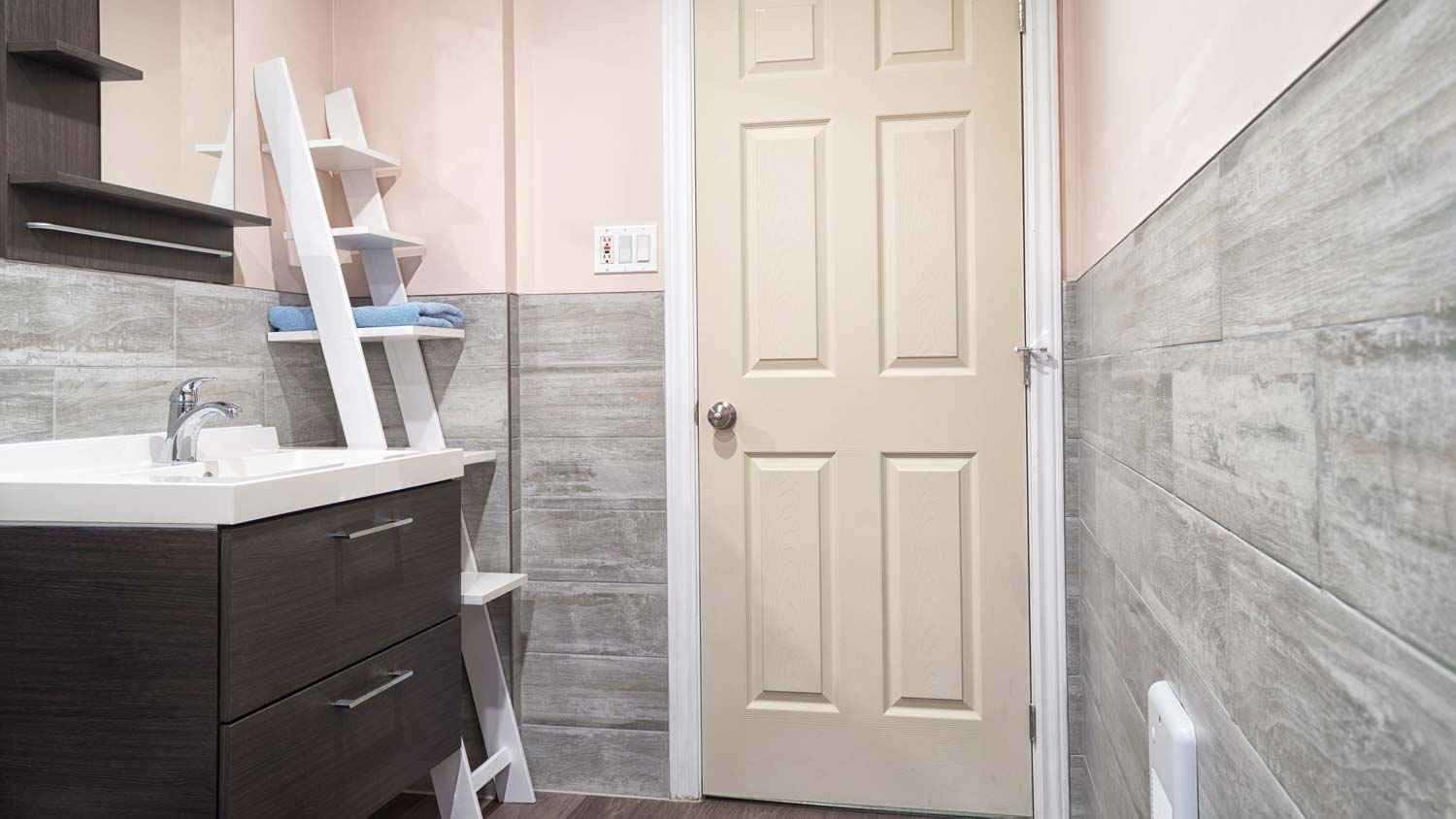
There are a few things you should think about when deciding on the best paint for your interior doors.
Think about the condition of the door. Higher sheens will make your door easier to clean, but they will also highlight every single imperfection on the door’s surface. If you have an older door with some dings and scratches, consider a lower sheen level to mute those imperfections a bit.
Consider the ease of cleaning. If your door sees a lot of passing foot traffic and interaction from people in your home, consider a higher sheen to make cleaning easier. High-gloss paint will stand up better than scrubbing with water and soap, so it will look new for longer.
Don’t forget about exposure to moisture. Acrylic paint is more durable, but it doesn’t flex as much as latex paint. If you’re painting an interior door that will see moisture from cooking or showering, we recommend a latex paint that will flex with the wood underneath.
Choose acrylic for sunny areas. Acrylic paint is often more UV-resistant, so it will hold its color better on doors that see natural sunlight. For example, acrylic paint will last longer without fading if you have a closet in a bright, sunny entryway.
Think about your budget. Acrylic paint tends to be more expensive than latex, and higher sheens are more costly, too. If you’re on a tight budget, stick to semi-gloss latex paint for interior doors and avoid high-gloss acrylic paints, which are the most expensive.
Frequently Asked Questions
Whether or not you should paint your interior doors is really up to you. If you want a more natural, rustic appearance, consider staining your doors instead of painting. Note that this is often only possible for solid-core doors. If you’re finishing a hollow-core door, these often come pre-primed and are meant to receive a coat of paint before going up in your home.
The best paint for interior doors that’s resistant to scratches is going to be an acrylic paint with a high-gloss finish. Acrylic paint is more durable than latex paint and can still stand up to some expansion and contraction of interior doors, unlike oil-based paint, which is better for non-wood exterior doors. A high-gloss finish will also provide some added protection against scratches.
You should prime interior doors before painting for the best results. If you do paint directly on the wood, you could see some of the grain patterns show through the paint, in which case you’d need to apply additional coats. Priming the surface before painting will reduce the number of coats and can better cover the grain pattern for a clean, finished look.
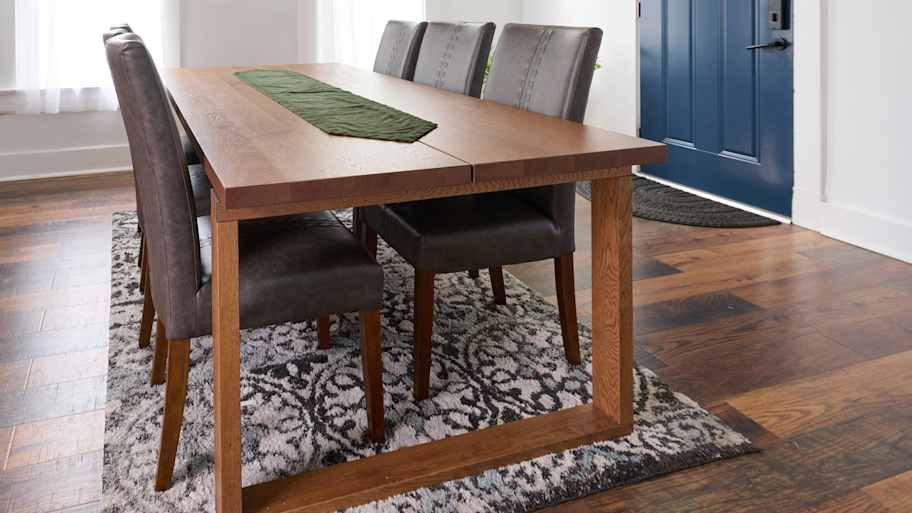

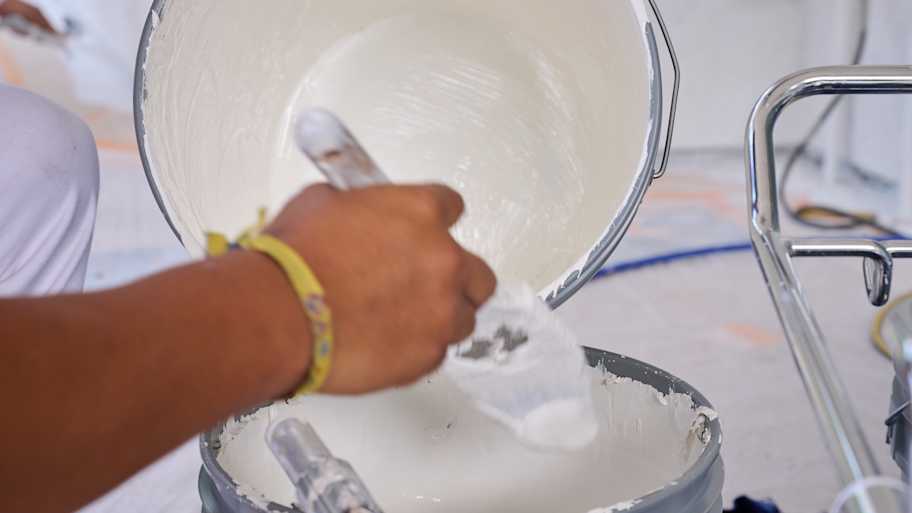
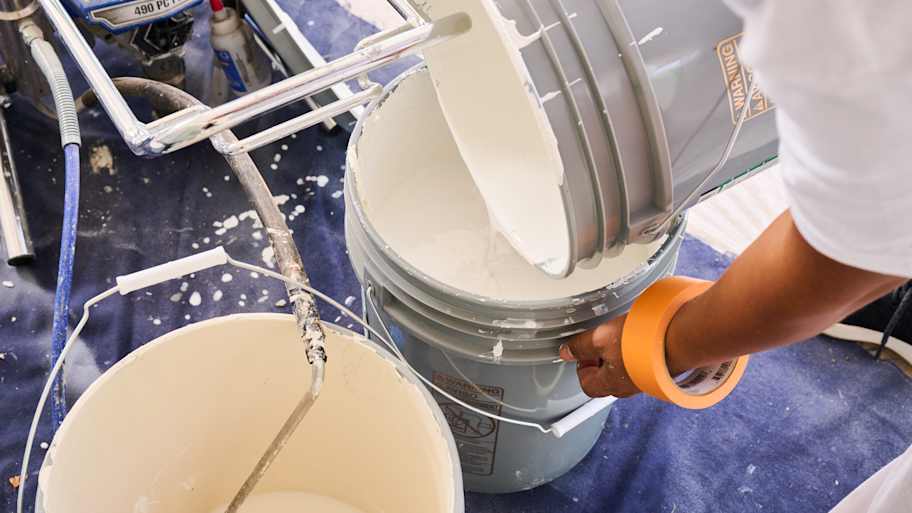
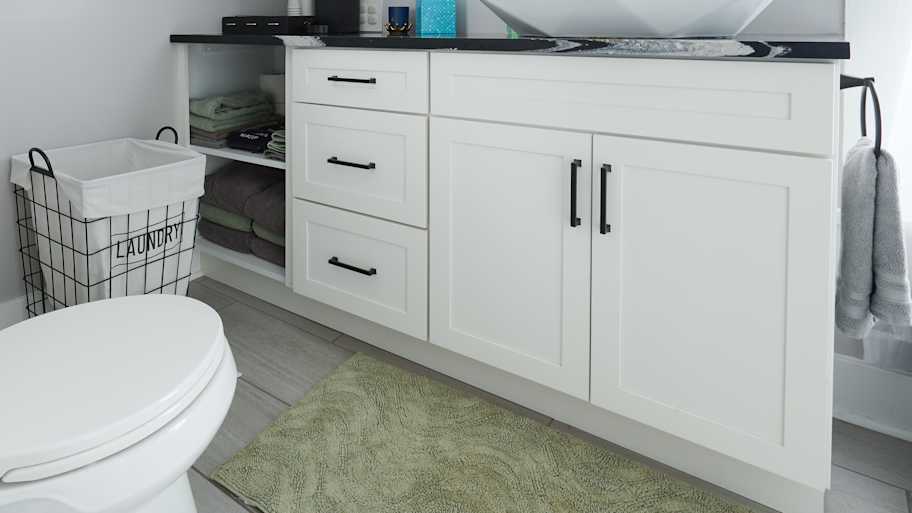
- Satin vs. Semi-Gloss Paint Finish: What’s the Difference?
- Best Paint Finish For Bathroom: A Complete Guide
- What’s the Difference Between Satin and Semi-Gloss Paint?
- The 5 Best Paint Sheens for Bathrooms
- What Is the Best Paint for Aluminum Siding?
- 6 Reasons Your Paint Is Peeling off the Wall
- 6 Common Paint Problems and How to Fix Them
- What Is Flat Paint? Everything You Need to Know
- Can You Paint Over Lead Paint Safely?
- What to Do if You Have Lead Paint in Your Home




